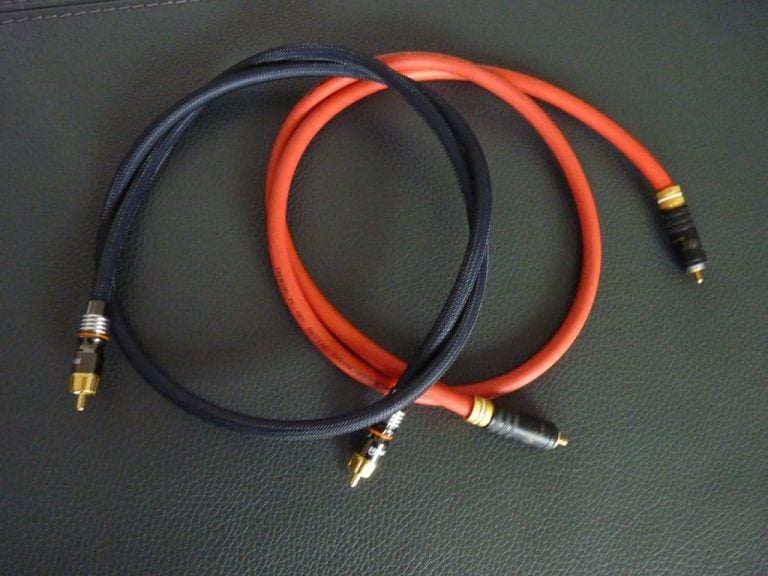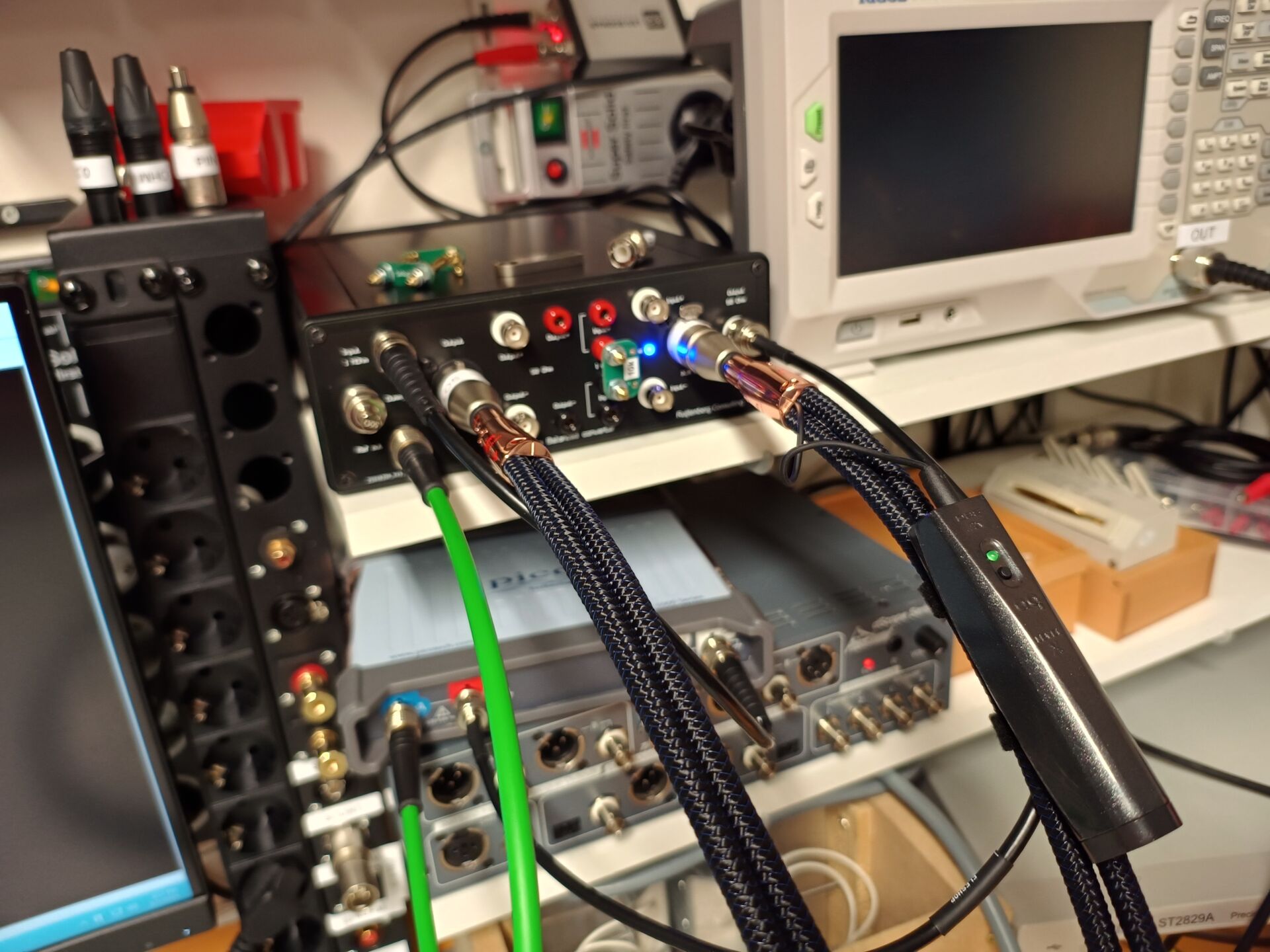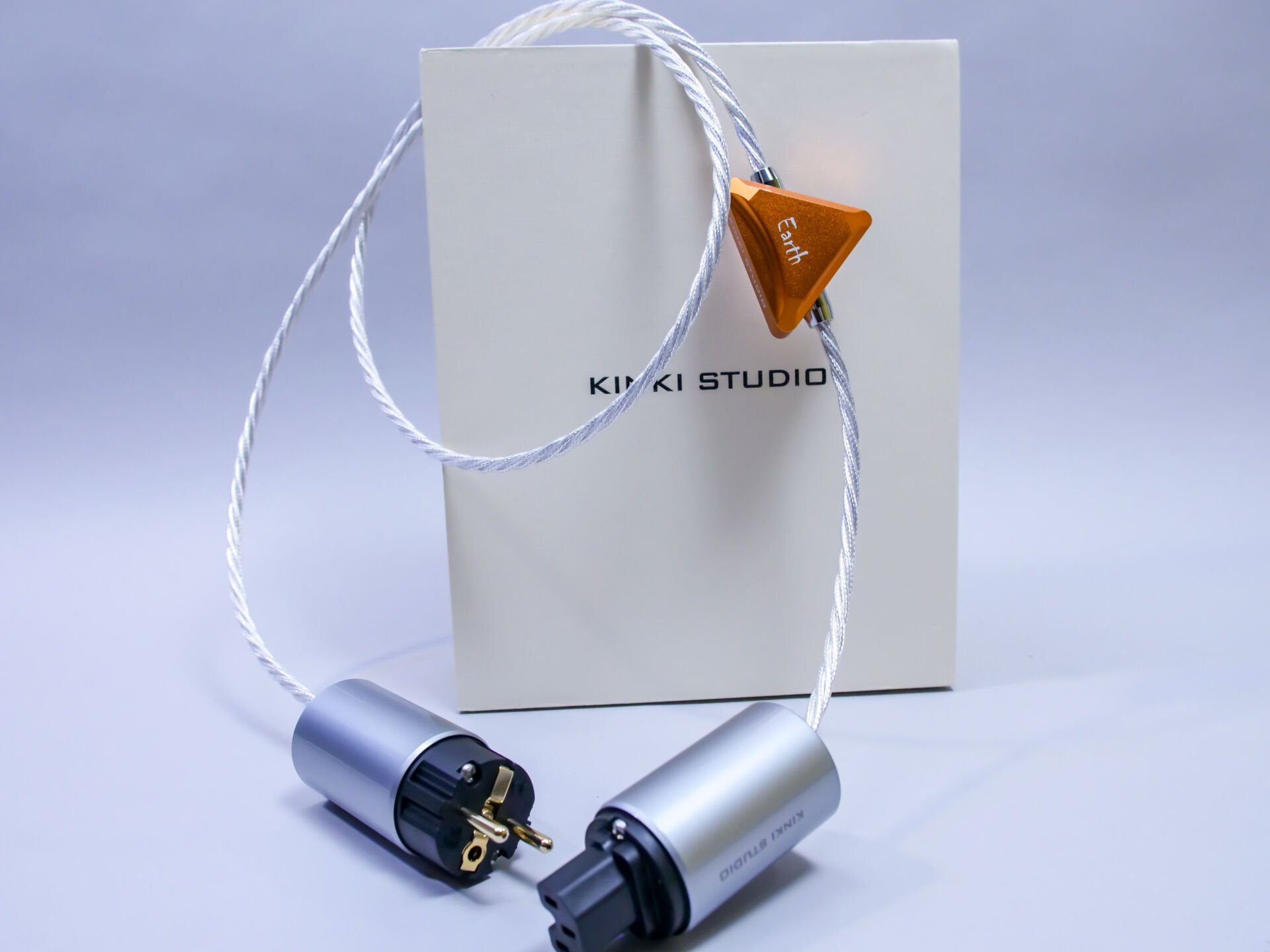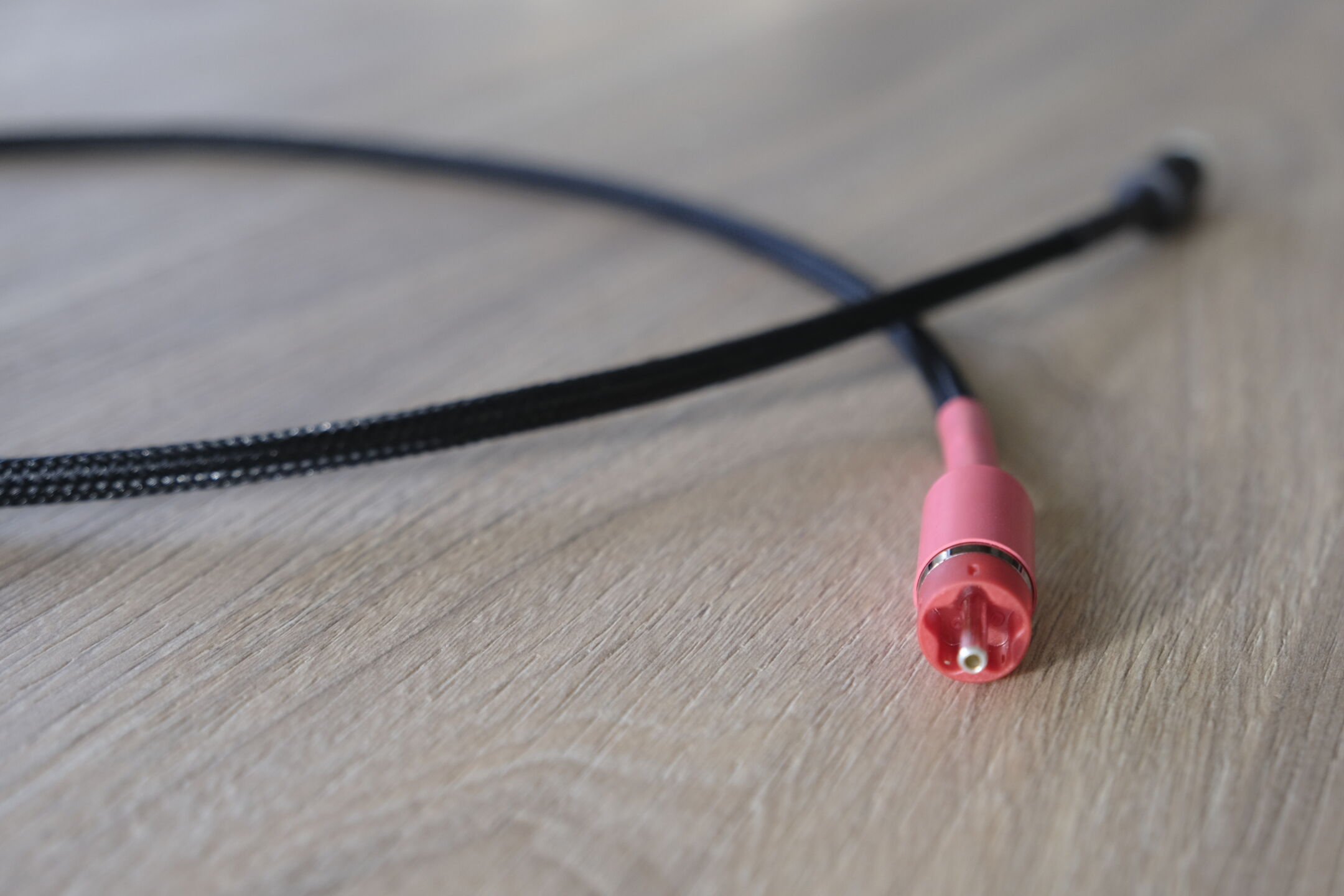

Cable discussions are always interesting we find. Is it audible? “Does a digital interlink even make a difference? Surely the data just arrives correctly?” Or, “a 1 is a 1 and a 0 is a 0”. True. But there’s more to digital audio. And one main player that can throw a spanner in your musical adventure is jitter. And we went to see if a digital interlink could add jitter….
For this relatively simple test, we used three devices to form a picture. First, a Rigol 60 MHz function generator. This generates a nice tight 1 MHz and 10 MHz square wave for this test. We set the output impedance of the function generator to 75 Ohms and the voltage to 2 volts rms. To gain insight into the response, we connect the cable to a Rigol Scope to see rise-time and any square-wave distortion. The Rigol’s input is terminated with a 75 Ohm bnc plug.
Finally, the cable goes on the Wavecrest SIA-3000 to measure jitter. We did that by connecting the calibration output to the input. So a simple loop measurement. The calibration output is set to a 10 MHz square wave.
To make the results understandable for you, we put a table below the screenshots. We briefly explain what these values are.
| Acc Sigma-1 jitter | Kind of ‘overall jitter’ within the 65% hit rate. This gives a good average. |
| Adj Cycle Avrg rms-J | Average jitter, measured relative to previous cycle(s). |
| Rise time 10 MHz sq wave | rise time at the 10 MHz square wave. |
| Rise time deviation | time deviation between ‘cycles’. |
| Fall time 10 MHz sq wave | ‘fall time’ / drop time of the 10 MHz square wave. |
| Overshoot 10 MHz sq wave | overshoot of the square wave. Measured in %. |
Listening
We made the measurements for this section only. Later we will do some (blind) listening.
Hirschmann BNC measurement cable
We use for our measurements, solid BNC measurement cables from Hirschmann. We have these in various lengths. The cable we measured is about 40cm. We can connect this cable directly to the Wavecrest. Well… we still have a screw connection from SMA to BNC on the Wavecrest, because SMA is very inconvenient in our measurement setups. We do have cables with sma connectors if needed by the way.
Not entirely surprisingly, the Hirschmann measures just fine. Everything is just in order. During the measurement (and calibration), we also see values very close to the given factory specifications. We put the values below as a baseline.
Overview
| Acc Sigma-1 jitter | 2,369 ps |
| Adj Cycle Avrg rms-J | 4,117 ps |
| Rise time 10 MHz sq wave | 11.84 ns |
| Rise time deviation | 298.1 ps |
| Fall time 10 MHz sq wave | 12.04 ns |
| Overshoot 10 MHz sq wave | 2,862 % |
Art Speak solid core silver coax
Overview
| Acc Sigma-1 jitter | 8,258 ps |
| Adj Cycle Avrg rms-J | 14,049 ps |
| Rise time 10 MHz sq wave | 12.13 ns |
| Rise time deviation | 275 ps |
| Fall time 10 MHz sq wave | 12.19 ns |
| Overshoot 10 MHz sq wave | 2,444 % |
The Art speak Solid Core Silver is a pretty affordable interlink. It hovers around 200 euros for a meter if we are correct. The measurement results are reasonable, but not very good if we are honest. Across the board, the Art Speak is a bit “slower” and we see an increase in jitter. We estimate that this is due to the method of shielding or maybe lack of shielding. We will try using the LCR to see what properties this cable shows. We will post thos in the next article.
Ixos 105 coaxial interlink
| Acc Sigma-1 jitter | 3.31 ps |
| Adj Cycle Avrg rms-J | 5.596 ps |
| Rise time 10 MHz sq wave | 11.46 ns |
| Rise time deviation | 299.2 ps |
| Fall time 10 MHz sq wave | 10.80 ns |
| Overshoot 10 MHz sq wave | 2,118 % |
The Ixos 105 is a cable your author has owned for over 20 years. Bought in his college days at Raf in Utrecht. We honestly forgot the price.
If we are honest, we are stunned at how well this cable measures. With about the same length as the Art Speak, we see values that are very close to the Hirschmann BNC cable. And that with an adapter in between. Very neat.
analog’ cables
We also took some analog interlinks for comparison. Purely to see if it is possible to get good results with cables that are not designed for that purpose. Spoiler: it doesn’t really go well.
Tubulus Argentus analog interlink
Overview
| Acc Sigma-1 jitter | No result (no valid measurement) |
| Adj Cycle Avrg rms-J | 99.629 ps (actually no measurement) |
| Rise time 10 MHz sq wave | 22.11 ns |
| Rise time deviation | 694.0 ps |
| Fall time 10 MHz sq wave | 22.05 ns |
| Overshoot 10 MHz sq wave | 2,962 % |
The Tubulus Argentus is not really comfortable handling square waves. 1 MHz is okay, but above that the cable chokes so much that the Wavecrest cannot perform a measurement anymore. The scope of the Wavecrest shows a lot of garbage and the Rigol – which has less bandwidth – shows a pretty rounded sine wave shape. It can also be seen in the rise time and deviation that things are going wrong: the values are way too high.
Conclusion: do not use this cable as a digital interlink.
Yeti Ultralink analog interlink
Overview
| Acc Sigma-1 jitter | 9,583 ps |
| Adj Cycle Avrg rms-J | 16,553 ps |
| Rise time 10 MHz sq wave | 15.15 ns |
| Rise time deviation | 4.6 ns |
| Fall time 10 MHz sq wave | 14 ns |
| Overshoot 10 MHz sq wave | 2,141 % |
The Yeti Ultralink is still doing surprisingly well. The Wavecrest can just take a reading and also the Rigol does not show very crazy things. Except for the deviations between cycles. That could be a capacitance problem (a result of the absence of shielding, among other things). However, we are quite surprised that this cable still performs so well, considering that it is not made for processing digital signals.
But would we use it as a coaxial interlink? No. Definitely not. This is not a cheap interlink. There are much better coaxial interlinks available for less money. Think of it as using a very expensive screwdriver to work on wood with. Yes: it can be done. But a cheap chisel is a lot more suitable for that job.
Conclusion
Is there a measurable difference in coaxial interlinks? Sure. In fact, there are quite large differences measurable. Within our range we already see 6ps difference in the “general” jitter measurement, and even 10ps in the Adj Cycle measurement. So we are just talking about a cable here!
And then the question: is an ordinary interlink suitable to be used as a digital interlink? No. Either they are too expensive, or just totally unsuitable, is our conclusion for now.


























